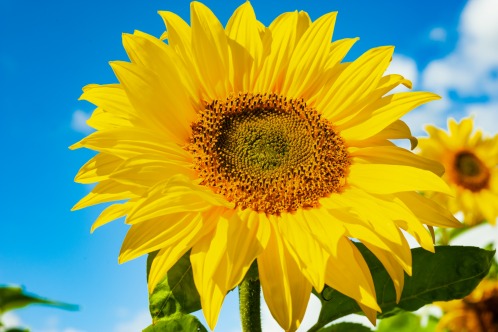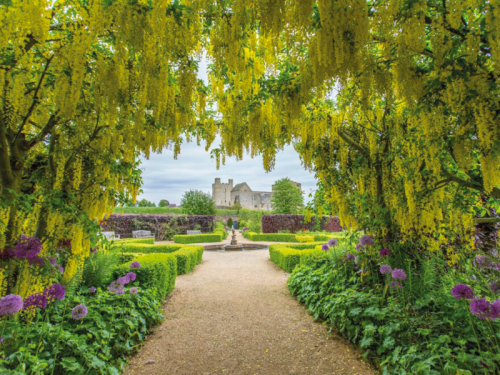The Best Gardens to Visit Across the North East
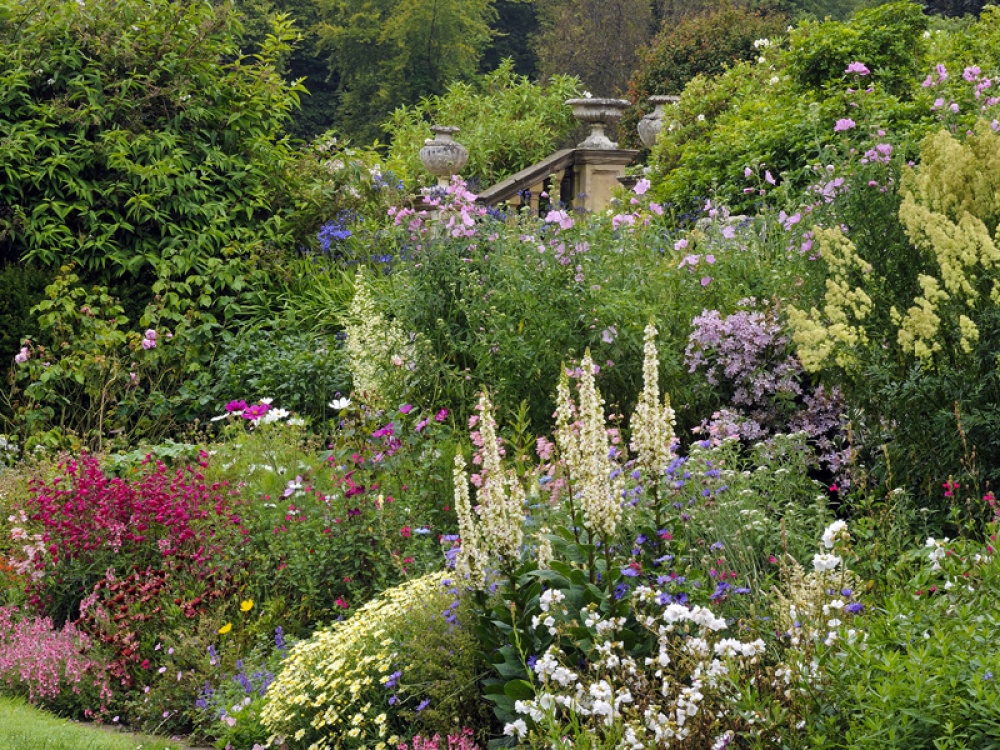
Many of our favourite gardens across the North East are starting to bloom
Howick Hall Gardens & Arboretum
Near Alnwick NE66 3LB
01665 577191
howickhallgardens.com
Primarily the work of the fifth Earl Grey, his wife Mabel and their daughter Lady Mary, the gardens at Howick Hall were first established around 1920. Best known for their spring bulbs, including daffodils planted by Lady Grey and native fritillaries in the meadow by the Burn, the Silverwood woodland section has an extensive collection of rhododendrons, and in the Arboretum, cherry and crab apple trees come into flower.
Tip for you trip: Don’t miss the Sensory Garden. This unique space was created in conjunction with the North Northumberland branch of the National Autistic Society to provide a safe and stimulating environment for children and adults with autism.
Birkheads Secret Gardens
Sunniside, Gateshead NE16 5EL
07778 447920
birkheadssecretgardens.co.uk
This award-winning garden is an RHS Partner Garden and the work of owners Christine and Mike Liddle. Every corner of the three-acre hillside plot is landscaped with a series of 14 individual gardens, which include the spring sanctuary, wildlife pond and meditation retreat.
Tip for your trip: This spring, keep an eye out for wildlife such as boxing hares, hedgehogs, tawny owls and even deer in the adjoining field.
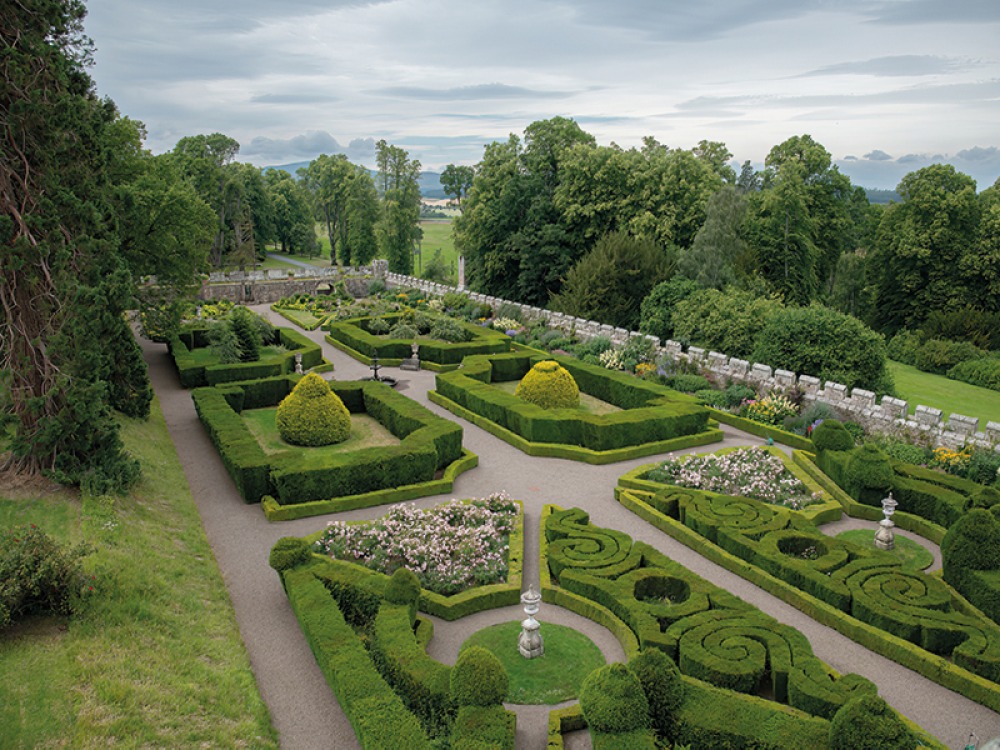
Chillingham Castle
Chillingham, Alnwick NE66 5NJ
01668 215359
chillingham-castle.com
The gorgeous formal garden at Chillingham Castle is the work of Sir Jeffry Wyatville, dating back to 1828. Famously, the herbaceous border is the longest in Northern England and the far wall was once a jousting grandstand, standing at 15 feet thick. The lakes in the garden are fed by seven springs and five burns or streams, and are surrounded by willow, birch and alder.
Tip for your trip: Keep your eyes peeled for the famous herd of Chillingham Wild Cattle nearby, as well as the woodland’s red squirrel population and the park’s resident deer.
Belsay Hall, Castle and Gardens
Belsay, Northumberland NE20 0DX
01661 881813
english-heritage.org.uk
As well as its grand hall, Belsay has 30 acres of gardens for visitors to explore. The centrepiece is the Jurassic-style Quarry Garden which has its own microclimate and includes a gigantic rhubarb nicknamed ‘Dinosaur’s Food’. Keep an eye out for the blue hues of the Siberian squill in the Terrace Garden, as well as carpets of daffodils, dogtooth violets and spring snowflakes which lighten up the wooded areas.
Tip for your trip: Wander along the beautiful Crag Wood Walk to work up an appetite before visiting Belsay’s Victorian tearoom.
The Alnwick Garden
Denwick Lane, Alnwick NE66 1YU
01665 511350
alnwickgarden.com
Created by the Duchess of Northumberland in 2001, The Alnwick Garden is the North East’s most famous garden. Visit from mid-April to see the 326 Taihaku cherry trees blossoming but be quick – it’s only a few weeks before the blossom falls. If you’re feeling brave, take a guided tour of The Poison Garden, filled with hundreds of toxic and narcotic plants.
Tip for your trip: If you’re bringing little ones with you it’s worth packing a change of clothes, as there are plenty of opportunities to splash about beside the garden’s many water features.
Wallington
Cambo, Northumberland NE61 4AR
01670 773606
nationaltrust.org.uk
A garden for all seasons, Wallington’s Walled Garden in the heart of the 13,000-acre estate is planted for nature. Listen to the trickling water of the Mary Pool, reflect in the Garden of Imagination and keep a quiet eye out for wildlife. In spring, the crocus lawn is a carpet of vibrant purple.
Tip for your trip: Explore the enchanting East Woods to spot fairy doors and tree sculptures.
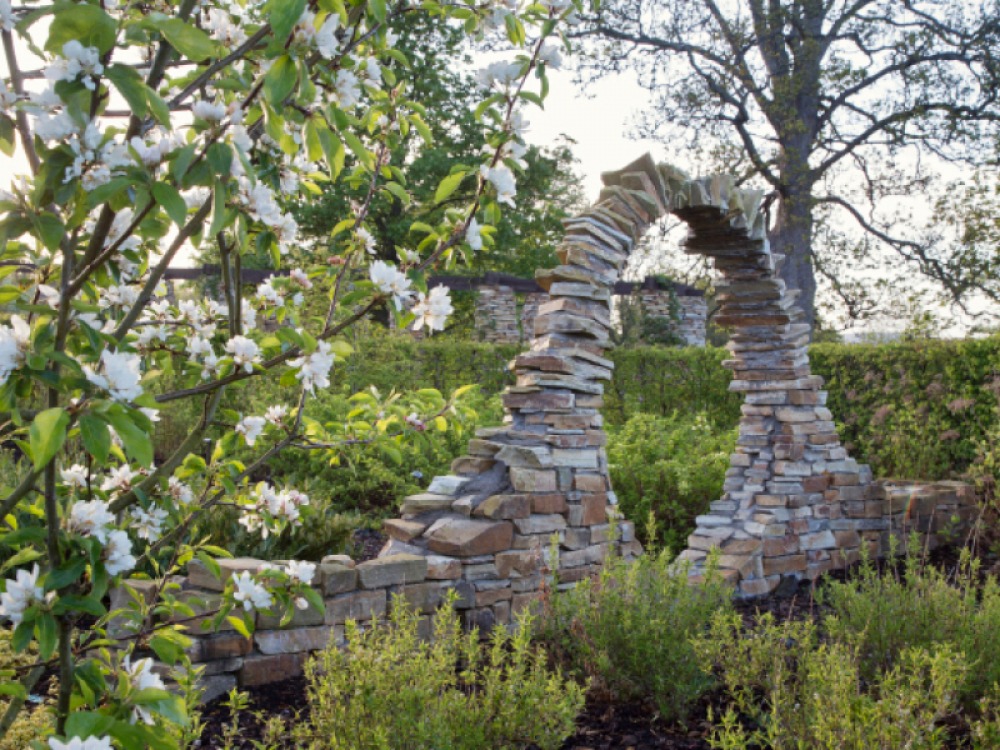
Monteviot House & Gardens
Monteviot House, Jedburgh TD8 6UH
01835 830380
monteviot.com
The 11 individually-designed gardens that make up Monteviot include the fragrant Herb Garden, tranquil Water Garden and unique Garden of Persistent Imagination. Spring flowers include rhododendron, camellia and magnolia, plus camassia later in the season and a great variety of daffodils all spring.
Tip for your trip: Wander down the Sorbus Avenue, planted on one side with beautiful hydrangea paniculata, and on the other with a bed of weigela victoria and three prunus pissardii nigra trees.
Bide-A-Wee Cottage Garden
Stanton, Netherwitton, Morpeth NE65 8PR
01670 772004
bideawee.co.uk
Escape the hustle and bustle of daily life in this idyllic cottage garden (which reopens in April). Originally a bare sandstone quarry, the garden has been lovingly nurtured into an oasis. Here visitors can see the National Collection of Centaurea, with more than 90 species of the flower throughout the garden, and for sale in the nursery.
Tip for your trip: Don’t miss the opportunity to purchase some of their natural cut-comb honey from the Bothy.
Cherryburn
Station Bank, Mickley Square, Stocksfield NE43 7DD
01661 843276
nationaltrust.org.uk
Cherryburn was the birthplace and childhood home of the famed naturalist and illustrator Thomas Bewick. The garden is dedicated to retaining the wildlife and natural landscape as he would’ve experienced it, so the rule is that all plants must be recognisable to him or encourage such wildlife to thrive. In spring, trees including cherries, pears, plums and apple blossoms begin to bloom and beneath their petal canopy is the perfect spot for a picnic or some quiet contemplation.
Tip for your trip: Make sure to stop by the print room for demonstrations of Bewick’s signature wood block printing technique.
The Gertrude Jekyll Garden
Holy Island TD15 2SH
01289 389244
nationaltrust.org.uk
Venture across the North Sea to Holy Island to find this hidden gem of a garden, small yet perfectly formed. Created by Gertrude Jekyll on the site of a vegetable patch that once provided Lindisfarne Castle’s soldiers with food, it’s a peaceful coastal spot to take in the views amongst the flowers. The garden is interesting to see year-round, with geometric perennial planning and hardy annuals.
Tip for your trip: If you spot a plant that you love in the garden, it’s most likely available to take home in the plant section of the village shop
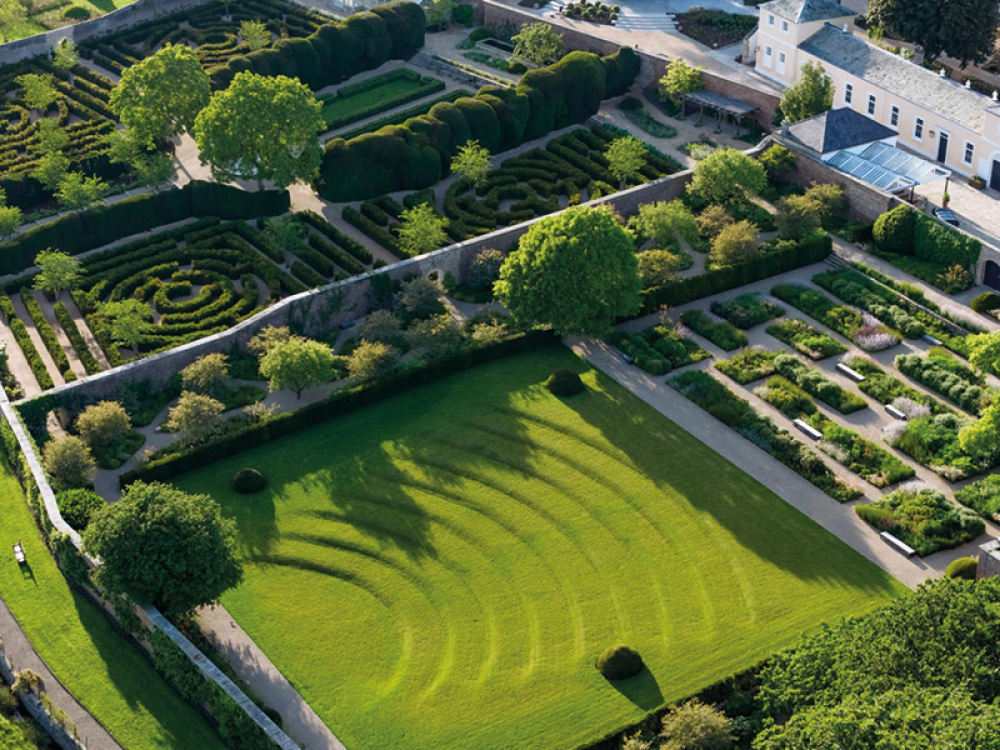
Raby Castle
Staindrop, Darlington DL2 3NF
01833 660207
raby.co.uk
The five-acre Walled Garden at Raby has recently been remodelled by acclaimed garden designer Luciano Giubbilei with a design that builds on its iconic yew hedges and central pond. The East Garden focuses on a grass amphitheatre which will host a programme of summer events, and the West Garden is the productive space for growing seasonal vegetables and hothouse plants. Alongside the historic Raby yew hedge is a series of new mazes and a graceful rill.
Tip for your trip: Head into the 200-acre parkland surrounding the castle to find the herds of red and fallow deer who give birth to adorable fawns in the spring.
Crook Hall Gardens
Frankland Lane, Sidegate, Durham
DH1 5SZ
0191 383 1832
nationaltrust.org.uk
Set against the backdrop of a Grade I-listed medieval hall, Crook Hall Gardens is home to a maze, a walled secret garden, orchard, and wildlife-rich moat pool, each of which has its own style. From April, apple blossom releases its scent into the garden, before falling to the ground like confetti. There are also bright splashes of colour during spring from crocuses, tulips, grape hyacinth and a large magnolia.
Tip for your trip: If the weather is nice, make a pitstop at their second-hand bookshop. Sometimes there’s no better combination than a quiet garden bench and a good book, especially when all proceeds go towards caring for the garden.
Dilston Physic Garden
Corbridge NE45 5QZ
07879 533875
dilstonphysicgarden.com
Discover this living, modern physic garden, where the scientific and traditional uses of plants for medicinal purposes meet. Incorporating medicinal plants into our lives is an almost forgotten art in the UK, and we lag behind other countries on demonstrating the true value and relevance of plant medicine. Dilston Physic Garden is a two-acre oasis of over 700 naturally cultivated European medicinal plants, where their team is dedicated to educating visitors on the power of plants for disease prevention, and safe, low-risk medicine. Read about their therapeutic virtues as you wander winding paths, and relax in the meadow, chamomile lawn or meditation hut.
Tip for your trip: Enjoy house-blended teas, prepared weekly by a team of loving volunteers, and purchase hand-blended tinctures and teas to take home and try.
Washington Old Hall
The Avenue, Washington Village, Washington NE38 7LE
0191 416 6879
nationaltrust.org.uk
Best known for being the ancestral home of US president George Washington, Washington Old Hall’s garden is rightfully impressive. There’s a mead (medieval wildflower lawn) to the side of the hall filled with rare and native flowers, and a terraced area with lavender lawn at the top. There’s also a 17th-century parterre recreation complete with topiary, espaliered fruit trees and scented herbs. The orchard grows a variety of English heritage apples and there’s also a cherry blossom tree, planted as a memorial to 9/11.
Tip for your trip: A highlight of any visit to Washington is the nuttery – a wildflower nut orchard home to hundreds of species of insects, mammals, birds and pondlife.




